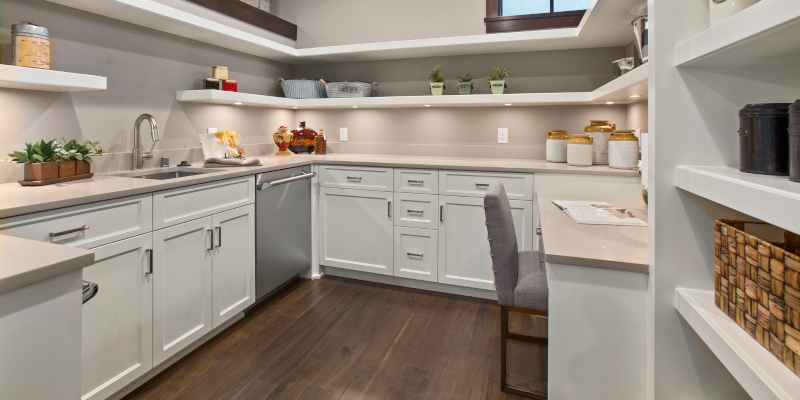
The Kitchen Cabinet Manufacturers Association - KCMA is a not-for profit organization that supports and advances kitchen cabinet manufacturing. It is North America's foremost authority on kitchen cabinets quality and standards. Cabinet manufacturers must meet the strict standards of KCMA to be certified. Additionally, KCMA requires that cabinet manufacturers meet strict quality standards.
Certification programs are an important tool in the kitchen cabinet industry. A product can be stamped with the KCMA stamp of approval to prove that it meets all standards. This will ensure its durability and long-term viability. If the product fails these standards, the manufacturer may have to modify the materials or processes.
During the inspection, the KCMA certified that the cabinet was free from defects and able to withstand normal wear and tear. Specifically, the product must pass the KCMA's A161.1 performance and construction standard. These tests include door, drawer, structural integrity, and resistance to corrosion.
Independent third party testing is used by KCMA, which allows for an objective assessment of a product’s performance. To ensure that the finish is durable, and easy to clean, stain and slide testing are performed on drawers and doors.
In addition to a rigorous performance and construction standard, KCMA offers a comprehensive Environmental Stewardship Program, which examines the entire manufacturing process. It takes a holistic approach to cabinet manufacturing, and is dedicated to developing solutions to industry issues, such as environmental sustainability, labor practices, and health and safety.
The ANSI (American National Standards Institute set of rules) is the basis for KCMA's certification programs. As a result, KCMA's code is updated every 5 years. A number of groups participate in the revision, including a consumer organization and a contractor. This allows KCMA continue to strengthen and develop its standards and ensures that the standard is relevant in a changing market.
Consequently, KCMA is now eligible for reaccreditation from the ANSI Executive Standards Council. The KCMA's certification is considered to be a national standard, which means it is referenced by government agencies and remodeling professionals.
As a result of a two-year review, the ANSI/KCMA A161.1 performance and construction standard for kitchen and vanity cabinets is being strengthened. For example, a recent update clarifies how to align cabinet drawers and doors without excessive binding. It has also been updated with a standardized open-and/close cycle timing.
A161.1 from KCMA is a performance standard in kitchen and bath cabinets. It has been revamped several times since its 1965 initial approval. Recently, KCMA announced it would begin work on its next update.
A KCMA approved cabinet is given accelerated conditions in order to mimic years of normal usage. The cabinet is exposed to temperatures of full boil and low, as well household common items. The cabinet has passed the rigorous ANSI/KCMA Quality Certification Seal.
FAQ
Is a service contract a warranty?
Service contracts are not warranties. It is an agreement between parties to exchange goods or services. In this instance, the customer agrees that he will cover the costs of replacement or repair if the product doesn't perform as expected. This type of contract is also known as a maintenance contract.
What is a Standard Contract Form?
A template for creating contracts is the standard contract form. These templates contain all the essential elements needed to create a contract. They include the date, place, time and names of the parties.
It is possible to modify standard contracts forms to suit the needs of individual clients. For example, certain companies may offer their standard contracts forms.
These forms may not be right for everyone. These forms can save you time and effort.
These standard contracts are worth looking at.
What is a service-contract agreement?
A Service Contract Agreement, or SCA, is an agreement between parties to offer services to one another. The SCA details the services being provided, the time and effort they should be used, who should pay for them, when they will start, and how much. It also defines what happens if one party violates the agreement's obligations.
Statistics
- (d) Contractor disputes related to compliance with its obligation shall be handled according to the rules, regulations, and relevant orders of the Secretary of Labor (see 41 CFR60-1.1). (acquisition.gov)
- (v) Place or places of performance of the prime contract and first-tier subcontracts estimated at $10 million or more, if known. (acquisition.gov)
- Depending on the client's trustworthiness and financial stability, a deposit is usually 10 to 50% of the total contract amount. (lawdepot.com)
- While we offer all our high-quality services at competitive prices, we know that many who need our services are on fixed incomes, so we offer a 10 percent discount for seniors and military members. (homeservicecontractorsinc.com)
- (1) Except as provided in paragraphs (a)(4) and (a)(8) of this section, if the estimated amount of the contract or subcontract is $10 million or more, the contracting officer shall request clearance from the appropriate OFCCP regional office before- (acquisition.gov)
External Links
How To
How do I get started in negotiating the terms of my first Service Agreement?
Negotiating terms for the first service agreement can seem daunting.
However, it does not have to be difficult for you to negotiate the terms of your first contract.
It all depends on how prepared and organized you are.
Before you start negotiations, make sure you fully understand the terms of your first service contract.
You should, for example, know exactly what you will do to the customer.
You should also know what your customer wants from you.
Once you have a clear idea of what you will provide, you can start preparing for negotiation.
The more information you have the better prepared you will be when you sit down with the other party.